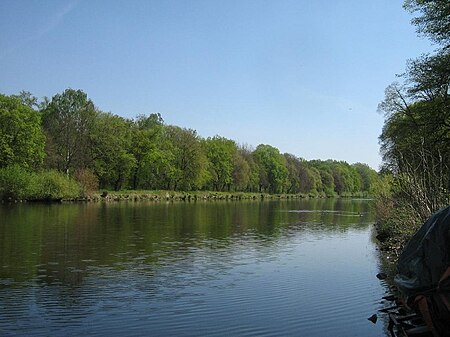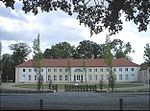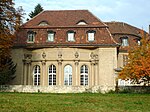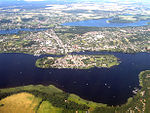Sacrow–Paretz Canal

The Sacrow–Paretz Canal, or Sacrow-Paretzer-Kanal in German (pronounced [ˈzakʁoː ˈpaːʁɛt͡sɐ kaˈnaːl] (listen)), is a canal in the northeastern German state of Brandenburg. It provides a short cut for vessels navigating the River Havel, linking the Jungfernsee, near Potsdam, with Paretz. Building of the canal began in 1874, and it was opened in 1876. Since then, it has been widened and deepened twice, once between 1888 and 1890, and again in the 1920s. Unlike the Havel Canal, which also provides a short cut for the River Havel, and also has its downstream end at Paretz, both ends of the Sacrow–Paretz Canal are downstream of Berlin. The canal is 12.5 kilometres (7.8 mi) long, of which 7.5 kilometres (4.7 mi) comprises artificially cut channel, whilst the rest is accounted for by several lakes. Besides the Jungfernsee, these include the Weißer See, the Fahrlander See and the Schlänitzsee. The canal has no locks, and is crossed by four bridges.
Excerpt from the Wikipedia article Sacrow–Paretz Canal (License: CC BY-SA 3.0, Authors, Images).Sacrow–Paretz Canal
Göttiner Weg,
Geographical coordinates (GPS) Address Nearby Places Show on map
Geographical coordinates (GPS)
| Latitude | Longitude |
|---|---|
| N 52.45 ° | E 12.9 ° |
Address
Göttiner Weg
Göttiner Weg
14542 (Töplitz)
Brandenburg, Germany
Open on Google Maps










